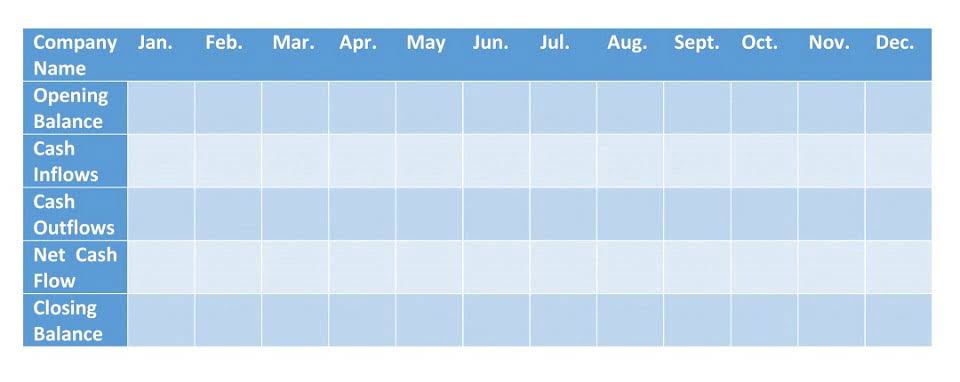Retained earnings: What they are and how to account for them Sage Advice Ireland

A company is normally subject to a company tax on the net income of the company in a financial year. The amount added to retained earnings is generally the after tax net income. In most cases in most jurisdictions no tax is payable https://www.instagram.com/bookstime_inc on the accumulated earnings retained by a company. However, this creates a potential for tax avoidance, because the corporate tax rate is usually lower than the higher marginal rates for some individual taxpayers.
- For more information on how Sage uses and looks after your personal data and the data protection rights you have, please read our Privacy Policy.
- As a result, any factors that affect net income, causing an increase or a decrease, will also ultimately affect RE.
- Read the article to learn more about the balance sheet treatment of retained earnings.
- Revenue, net profit, and retained earnings are terms frequently used on a company’s balance sheet, but it’s important to understand their differences.
- In the above formula, companies may either have profits or losses during a period.
- Retained earnings are calculated by subtracting dividends from the sum total of the retained earnings balance at the beginning of an accounting period and the net profit or loss from that accounting period.
How are retained earnings different from dividends?

Changes in unappropriated retained earnings usually consist of the addition of net income (or deduction of net loss) and the deduction of dividends and appropriations. Changes in appropriated retained earnings consist of increases or decreases in appropriations. Retained earnings are affected by any increases or decreases in net income and dividends paid to shareholders. As a result, any items that drive net income higher or push it lower will ultimately affect retained earnings. In contrast, stock dividends don’t result in a cash outflow, but they transfer a portion of retained earnings to common stock. Retained earnings are the total profits a company has earned over time, considering that it didn’t give those profits to its shareholders as dividends.
Calculate and Subtract Dividends Paid to Shareholders in Current Period
- Your accounting software will handle this calculation for you when it generates your company’s balance sheet, statement of retained earnings and other financial statements.
- Retaining earnings by a company increases the company’s shareholder equity, which increases the value of each shareholder’s shareholding.
- Businesses use this equity to fund expensive asset purchases, add a product line, or buy a competitor.
- Retained earnings (earned surplus) are essential for understanding a company’s financial health, reflecting the funds available for growth, capital expenditures, and other business investments.
Let’s say that a marketer named Elena is looking to expand her agency, but needs to provide some information about retained earnings to attract new investment. The reserve account is drawn from retained earnings, but the key difference is reserves have a defined purpose – for example, to pay down an anticipated future debt. For example, you might want to create a retained earnings account to save up for some new equipment or a https://www.bookstime.com/ vehicle – something known as capital expenditure.
- Since you’re thinking of keeping that money for reinvestment in the business, you forego a cash dividend and decide to issue a 5% stock dividend instead.
- Declared dividends are a debit to the retained earnings account whether paid or not.
- Both revenue and retained earnings are crucial for assessing a company’s financial health, but they represent different aspects of the financial picture.
- Also, keep in mind that the equation you use to get shareholders’ equity is the same you use to get your working capital.
Would you prefer to work with a financial professional remotely or in-person?
Retained earnings are calculated through taking the beginning-period retained earnings, adding to the net income (or loss), and subtracting dividend payouts. In terms of financial statements, you can find your retained earnings account (sometimes called Member Capital) on your balance sheet in the equity section, alongside shareholders’ equity. In rare cases, companies include retained earnings on their income statements. Retained earnings are a type of equity and are therefore reported in the shareholders’ equity section of the balance sheet. Although retained earnings are not themselves an asset, they can be used to purchase assets such as inventory, equipment, or other investments.
Retained earnings are the portion of a company’s net income that management retains for internal operations instead of paying it to shareholders in the form of dividends. In short, retained earnings are the cumulative total of earnings that have yet to be paid to shareholders. These funds are also held in reserve to reinvest back into the company through purchases of fixed assets or to pay down debt. Now your business is taking off and you’re starting to make a healthy profit which means it’s time to pay dividends. Your accounting software will handle this calculation for you when it generates your company’s balance sheet, statement of retained earnings and other financial statements. It reconciles the beginning balance of net income or loss for the period, subtracts dividends paid to shareholders and provides the ending balance of retained earnings.
- When you leave a comment on this article, please note that if approved, it will be publicly available and visible at the bottom of the article on this blog.
- One can get a sense of how the retained earnings have been used by studying the corporation’s balance sheet and its statement of cash flows.
- In rare cases, companies include retained earnings on their income statements.
- In fact, some very small businesses – such as sole traders – might not even account for retained earnings and instead may simply consider it part of working capital.
- One way to assess how successful a company is in using retained money is to look at a key factor called retained earnings to market value.
- Retained earnings and profits are related concepts, but they’re not exactly the same.

Our writing and editorial staff are retained earnings a liability a team of experts holding advanced financial designations and have written for most major financial media publications. Our work has been directly cited by organizations including Entrepreneur, Business Insider, Investopedia, Forbes, CNBC, and many others. Finance Strategists has an advertising relationship with some of the companies included on this website. We may earn a commission when you click on a link or make a purchase through the links on our site. All of our content is based on objective analysis, and the opinions are our own. Retained earnings are reclassified as one or more types of paid-in capital under two general circumstances.

Relation between Net Income and Retained Earnings
Retained earnings are directly impacted by the same items that impact net income. These include revenues, cost of goods sold, operating expenses, and depreciation. Negative retained earnings are a sign of poor financial health as it means that a company has experienced losses in the previous year, specifically, a net income loss. How can you see a snapshot of your business’ financial situation at any time? This special report tells you about the things your business owns and what it owes to others, as well as how much value your business has for its owners. One key thing to pay attention to is the amount of money your company keeps for future use, which can show how stable your business is and how much it might grow.

If they are confident that this surplus income can be reinvested in the business, then it can create more value for the stockholders by generating higher returns. According to FASB Statement No. 16, prior period adjustments consist almost entirely of corrections of errors in previously published financial statements. Corrections of abnormal, nonrecurring errors that may have been caused by the improper use of an accounting principle or by mathematical mistakes are prior period adjustments.
Step 2: State the Balance From the Prior Year

For traded securities, an ex-dividend date precedes the date of record by five days to permit the stockholder list to be updated and serves effectively as the date of record. Retained earnings are a good source of internal finance used by all organizations. The process of retaining earnings is also known as “plowing back profits.”
